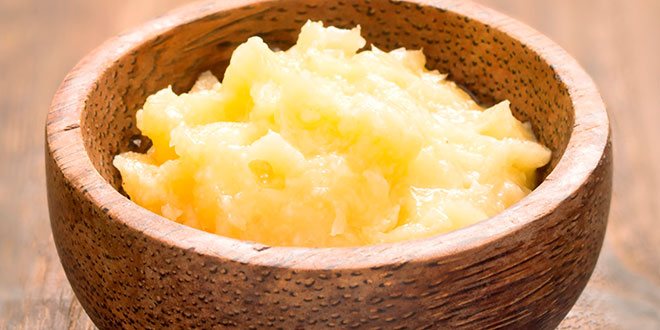The journey of ghee in India has very much been similar to that of yoga. From being thousand years old wisdom that originated in our land, to getting dismissed and disregarded by ‘modern day’ gurus and scientists only to be picked up by the West and reintroduced to us by a different name, both are India’s greatest export to the world.

Ghee or ‘clarified butter’ (as they call it in the West) has always been considered as the promotive of health, memory, intelligence, fertility, of vital essence and nourishment in Ayurveda. Food cooked in desi/ asli ghee used to be a status of prosperity and good health. Until, sometime in 1970s, nutritionists, doctors and pharma companies joined hands to poop that party. A low fat diet was pushed by U.S. Dietary Guidelines in 1977. “Saturated fat is bad for our heart, increases cholesterol and causes heart attacks”, they said. Back at home, we too listened to it and dropped our ghee. Ghee thus made an exit from our foods, our plates and our kitchens.
THE RE-EMERGENCE OF GHEE AS A SUPERFOOD
Now fast forward to today and here’s a new thought – what if research issued 40 years ago was not based on solid evidence? What if we were wrong about ghee?
In the latest review of studies that investigated the link between dietary fat and heart health, researchers say the guidelines in the 1970s got it all wrong. In fact, recommendations to reduce the amount of fat we eat every day should never have been made. In April 2015, USDA reviewed its guidelines and removed the dietary cholesterol upper limit declaring that fat/ cholesterol from food had little to do with the cholesterol circulating in the body. American supermarkets started stocking ‘Indian ghee’ and promoted it as ‘liquid gold’. In Nov 2015, Ghee made it to the list of “The 50 new healthiest foods of all time” by TIME magazine.
So amongst food companies, government policies and scientific bodies, a 5,000-year-old wisdom got erased to be reintroduced as the ‘new’ health food. But the question is –Will ladoos, halwas, parathas smothered with ghee regain its lost glory? Will we be able to overcome a fear that has lived with us for 40 years?
READ ALSO-
BENEFITS OF BUTTER– A day spent BETTER with BUTTER


 The need of the hour is to encourage cultivation of various NUCs and get them back in our diets. The cross – sectoral benefits of doing so are –
The need of the hour is to encourage cultivation of various NUCs and get them back in our diets. The cross – sectoral benefits of doing so are –